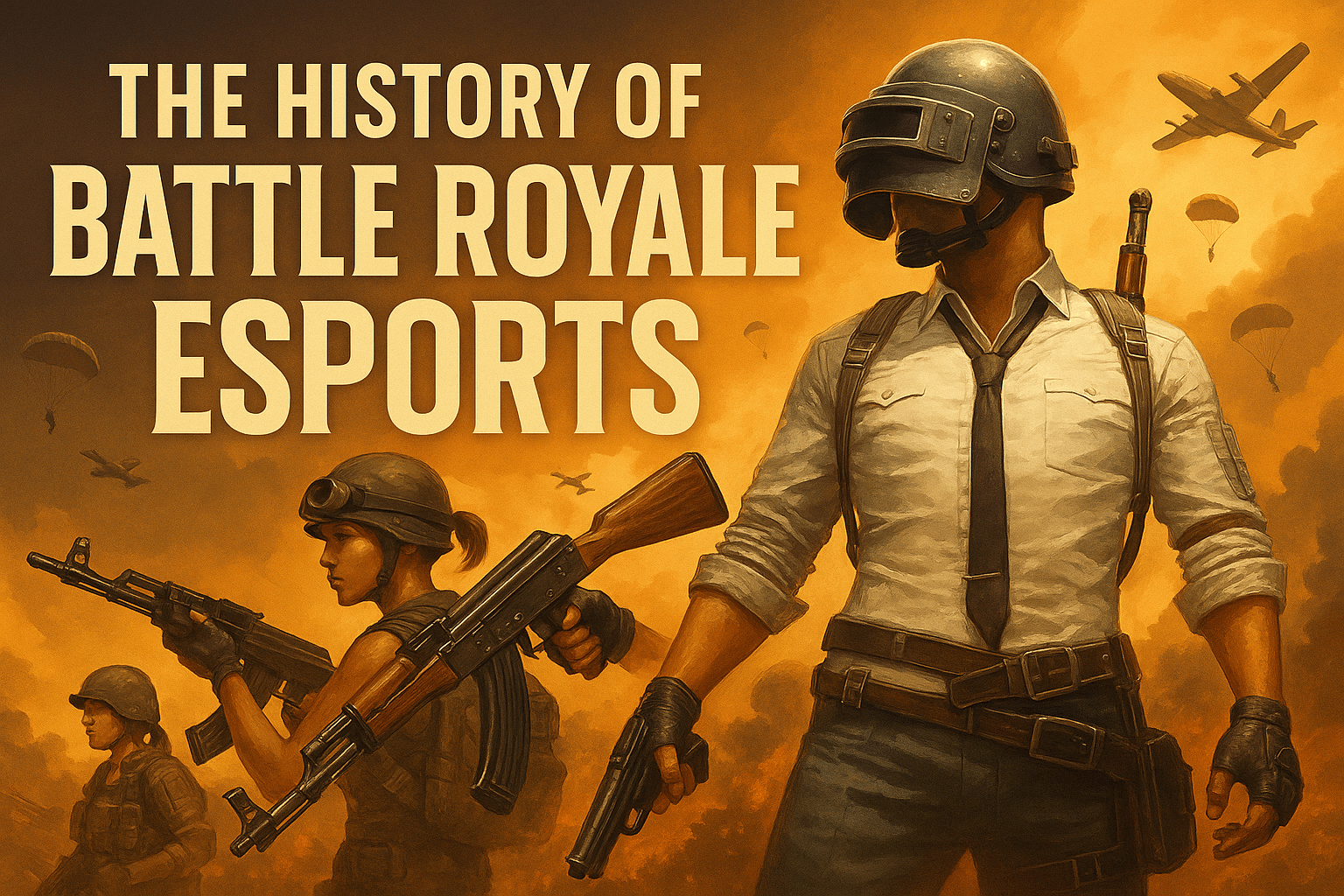Last Updated on August 19, 2025 by Caesar Fikson
Battle-royale esports didn’t march in neatly; it parachuted, tossed the map, and started shrinking the safe zone on every legacy format still clinging to best-of-five brackets. I watched the whole thing from the affiliate side at NowG, first scratching my head at H1Z1’s chaotic lan-lobbies, then sprinting to lock inventory when Fortnite dangled a $30 million World Cup purse. Even jaded sportsbook traders perk up when a single drop-zone spectacle spikes concurrent viewers past two million. What follows is the compressed, messy, exhilarating history that got us here—and why the circle keeps closing tighter each season.
Mods, Mayhem, and the First “Last-Player-Standing” Arenas
The origin story isn’t a slick AAA launch; it’s a string of community mods. Arma 2’s DayZ Battle Royale mod, Minecraft “Hunger Games” servers, and finally H1Z1: King of the Kill proved that 100-way elimination games could hold stream chat long past midnight. By 2015 the first TwitchCon Invitationals had six-figure prize pools, and by 2018 the H1Z1 Pro League rolled out with a promised $300 k split and $50 k player salaries—a head-turning number back then.
The PUBG Shockwave
Brendan Greene’s PlayerUnknown’s Battlegrounds landed in March 2017 and sold five million copies in three months. A year later, PUBG Global Invitational Berlin paid out $2 m and put battle-royale POVs on a stadium Jumbotron. Today’s PUBG Global Championship 2024 starts at $1.5 m and inflates via in-game item revenue share—25 % of cosmetics funnel straight into the pot.
Have you noticed how that revenue mechanic mirrors RevShare logic we drill into affiliates? Same dopamine loop, different ledger.
Fortnite: $30 Million and Mainstream Mania
Epic detonated the ceiling in 2019: the Fortnite World Cup solo finals peaked at 2.3 m concurrent viewers, while 16-year-old Bugha pocketed a tidy $3 m. Traditional TV sports writers suddenly learned the word “loadout.” Epic’s yearly ecosystem still floats nine-figure prize commitments, even if the pandemic nixed follow-up stadium spectacles, according to wikipedia.
That purse also set a precedent for revenue-share sponsorship models operators later mimicked for in-play betting markets—obvious synergy once you see it.
Apex, Warzone, and the Age of Broadcast Hybrids
Apex Legends crashed the party in 2019, but EA took the slow-cook route: $500 k online qualifiers, then multi-million-dollar live championships. Fast-forward—Year 4 Champs (Sapporo, Jan 2025) puts $2 m on the line and sold out before the first zone closed.
Call of Duty answered with World Series of Warzone. The 2024 Global Finals dangled a $1 m purse and pulled in 286 k peak viewers—smaller than Fortnite flash-bangs yet big enough for sportsbooks to trial live odds.
Esports production crews quietly adopted hybrid workflows—AR player cards, mobile-first vertical feeds—because a shrinking safe zone is inherently cinematic. Good luck replicating that tension in a best-of-three MOBA lane push.
Mobile Kings Rise: Free Fire & PUBG Mobile
Ignore mobile at your peril. Garena’s Free Fire World Series drew 731 k peak viewers in Rio (2024) on a $1 m prize pool, after flirting with 5.4 m peaks back in 2021. esportsinsider.comliquipedia.net
Meanwhile the PUBG Mobile Global Championship 2024 showers teams with $3 m. Emerging-market operators salivate because Gen-Z bettors in Jakarta or São Paulo watch on 4-G plans, not 4-K TVs. en.wikipedia.org
Quick-Look Table: Five Landmark Events
| Year | Title Event | Prize Pool | Peak Viewers | Signature Twist |
|---|---|---|---|---|
| 2015 | H1Z1 Invitational (TwitchCon) | $300 k | ~390 k TV + Twitch | First BR on U.S. primetime TV tweaktown.com |
| 2018 | PUBG Global Invitational | $2 m | 1.2 m+ streams | Pan-cam spectator tech debuted |
| 2019 | Fortnite World Cup | $30 m | 2.3 m | Stadium LAN + in-client viewing |
| 2024 | Free Fire World Series Rio | $1 m | 731 k | Mobile-only, LATAM crowd pop |
| 2025 | Apex ALGS Year 4 Champs | $2 m | TBD (Jan 2025) | LAN + choose-your-POV stream |
Who Owns the Audience? Data, Streams, and the Affiliate Edge
Battle-royale broadcasts are heat-mapped goldmines. Every drop site, every circle rotation is timestamped. Betting desks scrape that feed for live prop odds (“Will Team Liquid survive Phase 4?”). Affiliates who pipe those odds into content see click-through spike 18 % on match days. I’ve run the numbers—absolutely critical uplift.
AI Sneaks Into the Circle
OBS trialed automated highlight reels at Paris 2024; algorithms cut 11 k hours of footage into snackable clips without a human editor yelling “roll clip five.” based on what we can read on svgeurope.org. Sports broadcasters now feed match telemetry into multimodal transformers that predict fights ten seconds out—perfect for inserting dynamic ads or pinging bettors when the kill-feed surges, according to arxiv.org.
It feels sci-fi until you witness an AI overlay flag a stealth flank in real time, push a context ad, and fire a sportsbook odds update—all inside the same twelve-second window.
Growing Pains, Shrinking Circles
Not every experiment stuck. H1Z1’s pro league folded after one split; Warzone still wrestles with cheater drama. Yet each stumble taught the genre to iterate at breakneck speed. Rule sets evolve mid-season, viewer overlays morph weekly, prize-pools re-crowdfund via skins faster than regulators can blink.
Here’s the bottom line: battle-royale esports rewired how fans watch, how sponsors monetize, and how data ties directly to every affiliate paycheck downstream. The safe zone is still shrinking—are you positioned to move before the gas closes?




